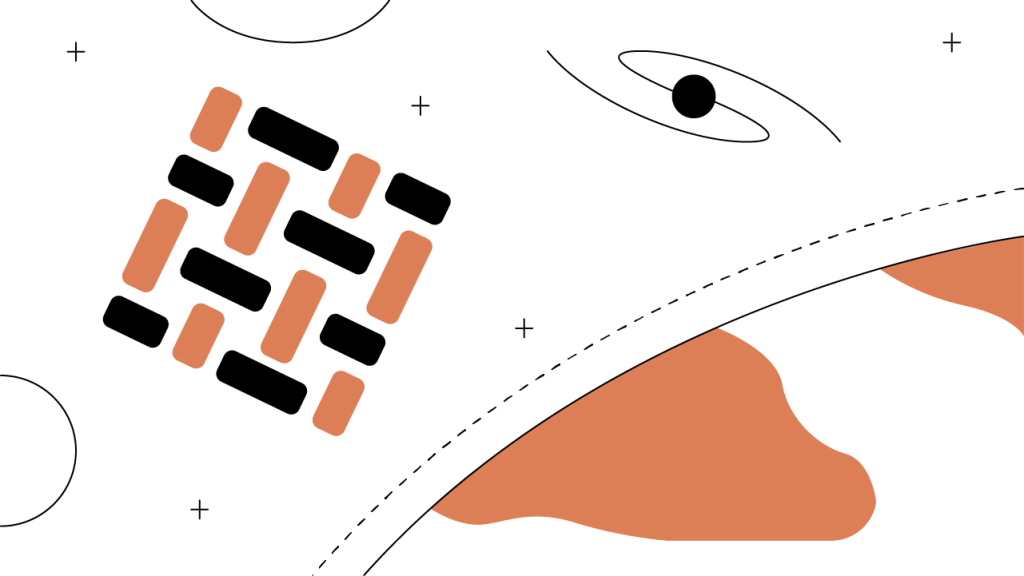Hyperledger Fabric: A Global Leader in Enterprise DLT
The open-source Hyperledger is a global leader in enterprise-grade distributed ledger platforms.
Updated October 14, 2021 • 3 min read

Summary
Hyperledger is a collaborative project led by the Linux Foundation that creates enterprise-focused Distributed Ledger Technology (DLT) and provides open source tools, frameworks, and code libraries to its more than 200 members. Its best-known project is Hyperledger Fabric, which has been used for food traceability, commerce, and shipping applications.
What Is Hyperledger?
Hyperledger is an open source, collaborative project that offers a suite of frameworks, tools, and code libraries for enterprise blockchains and Distributed Ledger Technologies (DLT). The Hyperledger blockchain project is hosted by the Linux Foundation, which has been a leader in open-source technology for 30 years, but operates with support from IBM and Intel. Launched in 2016, Hyperledger has more than 200 members from a variety of global industries including financial services, healthcare, supply chains, manufacturing, and the tech sector. Notable members include Walmart, Visa, FedEx, Huawei, Aetna, and Telefonica, among others.
Hyperledger’s projects include a variety of permissioned DLT platforms. Unlike public, highly decentralized blockchains like Ethereum and Bitcoin, DLT platforms that are permissioned allow only authorized parties to access and participate in the network. Permissioned DLTs can be private — controlled by a centralized entity or a consortium controlled by several entities. Private and consortium DLTs are typically used by large-scale businesses looking to reap the benefits of blockchain-like architecture while ensuring that specific information remains private for either regulatory or competitive reasons.
Though Hyperledger networks are permissioned blockchains, anyone can participate in the Hyperledger project at-large by contributing to — or becoming — a maintainer of the codebase. Technical decisions, such as adding new features to distributed ledgers, are made by the Technical Steering Committee, which is composed of a group of community-elected developers. Decisions about using funds raised by Hyperledger — and other business and marketing matters — are made by the Hyperledger Governing Board, which is made up of representatives elected by members of the project.
Hyperledger Fabric
Hyperledger’s best-known product is Hyperledger Fabric, a permissioned, enterprise-grade DLT platform designed for a variety of use cases. Fabric has a highly modular architecture and offers plug-and-play components including consensus management and membership services, which can be customized to fit particular use cases. Its other features include private transactions and smart contracts that can be written in general-purpose programming languages such as Java, Go, and Node.js, while also offering support for the Ethereum Virtual Machine (EVM). Participants in Hyperledger Fabric networks are known to each other, which reduces the risk of malicious behavior and hacks.
Hyperledger Fabric Use Cases
With strong enterprise blockchain support and a global open-source development push, Hyperledger Fabric has already fulfilled a number of remarkable use cases. Perhaps most notably, Hyperledger Fabric provides the framework for the IBM blockchain platform, which was utilized by Walmart to build a food traceability system in 2018. The system tracks food items throughout the Walmart supply chain so that outbreaks of diseases such as E. coli can be quickly traced to producers and associated food items can be taken off the shelves. Tests indicated that the system reduced the time required to trace the provenance of mangoes in the U.S. from seven days to 2.2 seconds.
Also in 2018, IBM joined forces with global shipping giant Maersk to create a global trade digitization platform built on Hyperledger Fabric. The project streamlines shipping by using the blockchain to show the status of documents like bills of lading and customs forms in an effort to reduce the bottlenecks that sometimes occur when shipments pass inspections. Further, in 2020, aerospace giant Honeywell developed an online aircraft parts marketplace with Hyperledger Fabric. The marketplace allows buyers to browse listings and purchase items with transactions recorded on the blockchain.
The Hyperledger Suite
While Fabric is the most used Hyperledger blockchain product, the project also houses a number of alternate platforms with specialized use cases. Other Hyperledger DLTs include:
Hyperledger Besu: Designed specifically for use in consortia
Hyperledger Burrow: Designed for permissioned Proof-of-Stake (PoS) use cases, along with private and consortium usage
Hyperledger Indy: Designed for digital identity use cases and to facilitate interoperability
Hyperledger Iroha: Designed for infrastructural or Internet of Things (IoT) applications
Hyperledger Sawtooth: Designed to operate with a variety of consensus algorithms
While public blockchains with cryptocurrencies like Bitcoin and Ethereum form a major part of decentralized technology’s growth and application, DLT platforms and enterprise blockchain-focused technologies like Hyperledger are also playing a huge role in helping to advance the sector. The Hyperledger initiative brings some of the world’s essential enterprises together with a global community of open-source developers to create solutions that complement the ever-growing blockchain industry. With its open governance and community-driven designs, Hyperledger provides the technology for a wide range of use cases and develops innovative business solutions.
Cryptopedia does not guarantee the reliability of the Site content and shall not be held liable for any errors, omissions, or inaccuracies. The opinions and views expressed in any Cryptopedia article are solely those of the author(s) and do not reflect the opinions of Gemini or its management. The information provided on the Site is for informational purposes only, and it does not constitute an endorsement of any of the products and services discussed or investment, financial, or trading advice. A qualified professional should be consulted prior to making financial decisions. Please visit our Cryptopedia Site Policy to learn more.

Is this article helpful?


